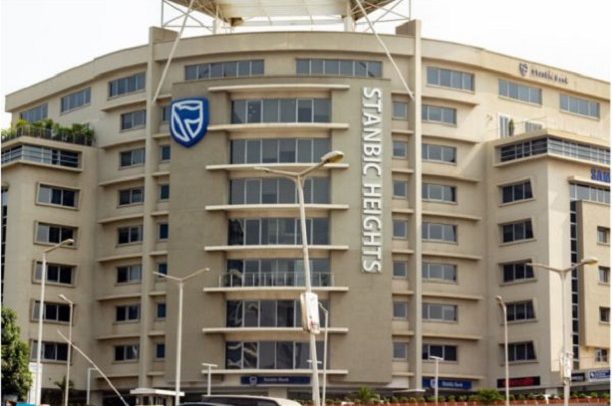
By Jemilatu ABDULAI
As Ghana moves decisively into a cash-lite economy, the country’s banking landscape is being transformed by digital innovation. The pandemic and the innovative muscle of tech giants may have accelerated the shift, but the real story is one of deep structural change, evolving customer expectations, technological advances, and affirmative policy direction from government and the Bank of Ghana.
In this new environment, financial institutions like Stanbic Bank are emerging as key players leading the digital transition, using its mobile app and online banking platform to make every day finance simpler, faster, and more inclusive.
The Digital Finance Context in Ghana
Ghana’s Digital Payments Roadmap – Toward a Cash-Lite Ghana policy lays out a clear national goal: to expand digital payments, deepen financial inclusion, and reduce the economy’s dependence on cash. In 2016, only about one per cent of payment transactions in Ghana were digital, according to the Ministry of Finance. Today, thanks to regulatory reforms, infrastructure investments, and rapid mobile penetration, that picture is changing rapidly.
The Bank of Ghana’s policy evolution report on payment systems also highlights how foundational infrastructure, such as the Real-Time Gross Settlement (RTGS) system, the Ghana Interbank Payment and Settlement System (GhIPSS), and interoperability between banks and mobile money, has made digital transactions easier and safer.
The KPMG Ghana Digital Trends 2025 report notes that internet penetration now exceeds 70 per cent, while mobile connectivity has surpassed 100 per cent of the population, creating fertile ground for innovation in banking.
Similarly, the PwC 2025 Ghana Banking Survey observes that banks have rapidly adopted mobile apps, automation, and artificial intelligence to meet customer demands. This digital readiness, reinforced by a vibrant fintech sector and a supportive regulatory environment, means Ghana’s financial system is entering its most transformative phase yet.
Digital Banking in a Post-Covid World
The Covid-19 pandemic did more than disrupt everyday life; It permanently altered the way Ghanaians interact with money. Lockdowns and mobility restrictions compelled banks to rethink traditional models of service delivery, with customers quickly turning to mobile apps, online accounts, and virtual customer service.
Recent surveys show that nearly two-thirds of Ghanaian banking customers now prefer mobile apps to branch visits, valuing the speed, simplicity, and accessibility of digital channels. For both banks and customers, digitalisation means lower costs, broader reach, and faster service. It also serves a national purpose: expanding access to financial services for rural and underserved communities who have traditionally been outside the formal banking system.
Stanbic Bank, Leading the Digital Banking Revolution
Within this changing landscape, Stanbic Bank Ghana has strategically positioned itself as a trusted digital finance partner. Banking apps must be more than a convenience tool. It must represent a holistic re-imagining of how customers experience banking. Through banking apps like the Stanbic Mobile App, customers can check balances, transfer funds, pay and schedule bills, buy airtime, and even manage debit cards remotely while traveling, all within a secure and intuitive interface.
Perhaps the most transformative feature has been the bank’s online loan functionality, which allows credit-worthy customers to apply for loans digitally. The entire process, from eligibility assessment to approval and disbursement, can be completed online, eliminating the need to visit a branch or fill lengthy forms. This innovation has been particularly beneficial for customers, enabling faster access to finance and bridging the traditional gap between the banked and unbanked.
Stanbic has also streamlined digital onboarding, allowing customers to initiate account opening remotely. This feature, coupled with 24-hour availability of services, has redefined convenience for individuals and businesses alike. Importantly, these advances are supported by the bank’s strong cybersecurity framework and compliance with Bank of Ghana’s data protection and e-payment guidelines, assuring customers of safety and trust.
A broader value proposition
For customers, the benefits of digital transformation are tangible: round-the-clock access to services, faster loan approvals, real-time account monitoring, and seamless bill payments. For businesses, digital banking reduces transaction costs and provides access to better analytics for cash flow management.
For the bank, digitisation brings scalability and efficiency, allowing Stanbic to serve more customers with less physical infrastructure. It also provides valuable insights from customer data, helping the bank tailor its products and risk management models. By embracing technology while maintaining its human touch through physical branches and relationship managers, Stanbic offers a hybrid model that accommodates both digital natives and traditional customers.
Stanbic Bank’s approach to digital banking also aligns with Ghana’s financial inclusion agenda. By enabling customers to open accounts, access loans, and transact digitally, the bank reaches individuals and small enterprises that would otherwise face geographic or logistical barriers. This complements national efforts to expand digital access and promote financial literacy.
Moreover, the bank’s partnerships within the fintech ecosystem, including interoperability with mobile money platforms, demonstrate a collaborative approach to building an inclusive financial future. This is precisely the model envisioned by the Bank of Ghana FinTech Sector Report 2024, which emphasises the need for banks and fintechs to co-create digital solutions that serve broader economic participation.
The Future of Banking
Despite progress, challenges remain. Digital literacy gaps, inconsistent connectivity, and lingering mistrust in online transactions continue to limit full adoption. Many customers still value the reassurance of physical interaction, with nearly half of banking clients indicating a preference for traditional channels. We must recognise this and continue to invest in customer experience, in-app value creation, and awareness campaigns to build confidence in digital services.
For instance, Stanbic Bank maintains a strong physical presence across Ghana to serve customers who are transitioning gradually to digital platforms. The strategy reflects a practical understanding of the Ghanaian market: digital transformation succeeds when it meets people where they are.
The direction of travel is clear. With Ghana’s digital economy expanding rapidly, the next wave of competition will centre on user experience, personalisation, and real-time services. Banks that offer simple, fast, and secure digital solutions will define the future of financial services.
For the Stanbic Mobile App, that future has already begun; a commitment to continuous investment in technology, customer-centric app design, and alignment with national digitalisation goals mark it out as a leader in Ghana’s financial transformation. In many ways, Stanbic’s model illustrates what the Cash-Lite Roadmap envisions: a future where every Ghanaian can access affordable, reliable, and convenient banking from the palm of their hand.
In bridging the gap between digital aspiration and financial inclusion, Stanbic Bank Ghana is not merely adapting to the digital age; it is helping to define it.
The post Digitisation, convenience and inclusion appeared first on The Business & Financial Times.
Read Full Story

















Facebook
Twitter
Pinterest
Instagram
Google+
YouTube
LinkedIn
RSS